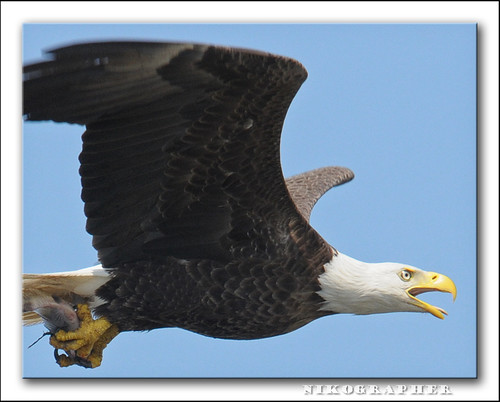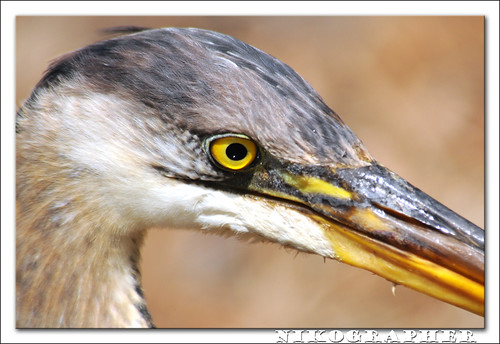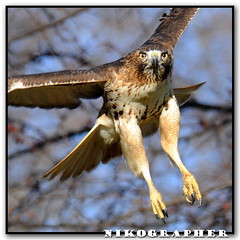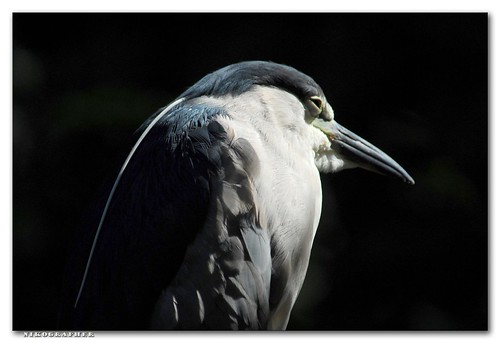I think this is my second installment on Approaching Wildlife in a way that will bother them less and get you better photos.
I've learned the following over the last couple of years as it pertains to wildlife.
Some times wildlife is far away and there's not much you can do to get closer yourself. But if you can blend in maybe they will come to or by you.
Getting in to situations that can be predicted and then adjusted to can sometimes work. For the below I was roughly positioned between this eagle perched, and some osprey when the osprey caught a fish. The eagle then pursued the osprey and after a few minutes stole the fish. I remained in a spot that I thought the eagle would fly towards once it got the fish. I got lucky and it flew right by me.
I try to be open to learning and putting time in to observing animals and trying to know what's going on. What they're reacting to, what I might have done, what they might have seen, etc.
I also often try, and some times fail, to not just key off of other photographers that have found something. For instance when at a Wildlife Refuge if I happen on someone that is obviously focusing a camera at something and working it, I will usually not stop at all at that spot, or I will do so in a slow quiet way that would have the least impact on whatever they're seeing. This can be tough, and I've done it wrong and stopped and messed up a moment, or an encounter that someone else was having. And for that matter I've had it happen to me. It can be frustrating, especially if you've been waiting hours at a spot for a certain thing to happen.
So, first rule would be - Don't Ruin Someone Else's Encounter So You Can Get Shots.
The second rule for approaching wildlife is related to how every location is different and every animal is different. Take the Great Blue Heron. I've seen them fly away in disgust at 100+ yards, just because they saw you and wanted to move on. I've also seen GBH's that would hunt at 20 yards or less if you stayed in side your car, and not pay you any attention. But they'd fly off the moment you opened your car door. And, finally I've been so close to a specific individual GBH that I considered how I would get away safely if it suddenly tried to attack me with it's beak (ie around 5 feet away). This guy:

The trick is to be very observant of your subject, like the Great Blue Heron, and to take numerous possible bird types in to account (friendly, shy, mean, weary, etc). I try to approach the encounter itself slowly. Rushing in to it will not help. Wild birds like to take things slowly, a peaceful pace, where they can see everything around them and go about their business. A lone GBH is usually on his own in the task, while a flock of Snow Geese or Ducks will act a bit as a collective. The groups of animals will all be paying a bit of attention to the surroundings, and as their un-comfort level rises they will communicate it. It could be a threat of an approaching predator, or it could be the approach of a photographer, maybe you. Maybe the second photographer to seize the chance to photograph the scene/moment.
When I approach a situation, I try to see what's going on, guess how far I can go in a certain direction (exiting car, walking closer if on foot, or even eye-balling certain subjects for more than a split second before I'm where I want to be for the first shots). Getting closer is always a goal, but there's also always a line where if you cross it you will disrupt an animal and possibly cause a threatening reaction aimed at yourself, and most likely not get the photos you want.
Location - Location is very important in how any given encounter will play out with wild animals. It is actually the base line for what to expect at a particular place in my mind. In high people traffic areas the wildlife that is seen there is used to it, and is either ok with it or won't be in the area long, and can offer some of the closest chances to see wildlife. Compare seeing a Hawk in the woods where no one else is within a mile and no one else may have seen the hawk possibly in days, to a Hawk that frequents a park or zoo where 100's of people might pass through its territory a day. It would be tough to spot and photograph the Hawk in the woods and NOT cause it to fly off, while the one at the park or zoo might not even notice you as anything special until you could practically reach out and grab it.
Zoo's for example are usually pretty high traffic locations, many people come to visit in large groups and walk the area, make lots of noise, and rarely look outside the exhibits themselves for wildlife. I've gotten some of my favorite wildlife (non-captive) photos at the zoo. Here are a few examples from the zoo:


The Black-Crowned Night Herons nest at the US National Zoo in Washington D.C., steal fish from the storks, and are very used to people being in the area. Supposedly there are a couple hundred birds in the flock that come back each year to nest.
To summarize "wildlife - the approach" - individual birds at a place might have different comfort levels, and all should be observed and approached slowly and carefully. Birds at different locations will almost certainly be used to different things and require a different approach.
The best thing to do is be very observant. Animals will often provide feedback, its bluntest form is just leaving the area because of your approach. But chances are that if you slow down and restrict your movement some and be mindful not to upset the animals, disturb whatever they're already doing, they will put up with more and not care.
So, you can err on the approach in two main ways - you can approach too quickly and too closely and have the animal leave. Or you can err on the side of staying far away and not causing any reaction (which is good) but not having gotten half as close as you might have if you kept going closer. I used to probably be 8 or 9 out of 10 times causing the wildlife to flee. Now I'm happy with 6 or 8 out of 10 animals not moving off at all, and the 2 to 4 animals that did move off a couple might be due to other photographers or outside forces (ie not because of me).
Here's an encounter that stands out in my memory, because not one but two other photographers approached this heron I was watching and trying to be so mindful of, and he flew away... The below is what seemed to me to be the exact moment when he decided to leave and take flight.
Happy Trails.
-Jon
![]()
Monday, December 8, 2008
Wildlife - The Approach Part 2
Subscribe to:
Post Comments (Atom)








3 comments:
Great post Jon. It's been a pleasure watching you improve over the years. Best wishes for the rest of the year. Cheers AndrewN.41
Great bird of prey in flight.
Good observation of birds habit.
You are so correct about learning their behavior -- there are GBHs in the pond where I live and I found they sometimes make a low grunting type of sound when they are preparing to fly and they always seem to launch towards the wind. This has helped me capture take-off and flight photos by being ready for the launch.
Post a Comment